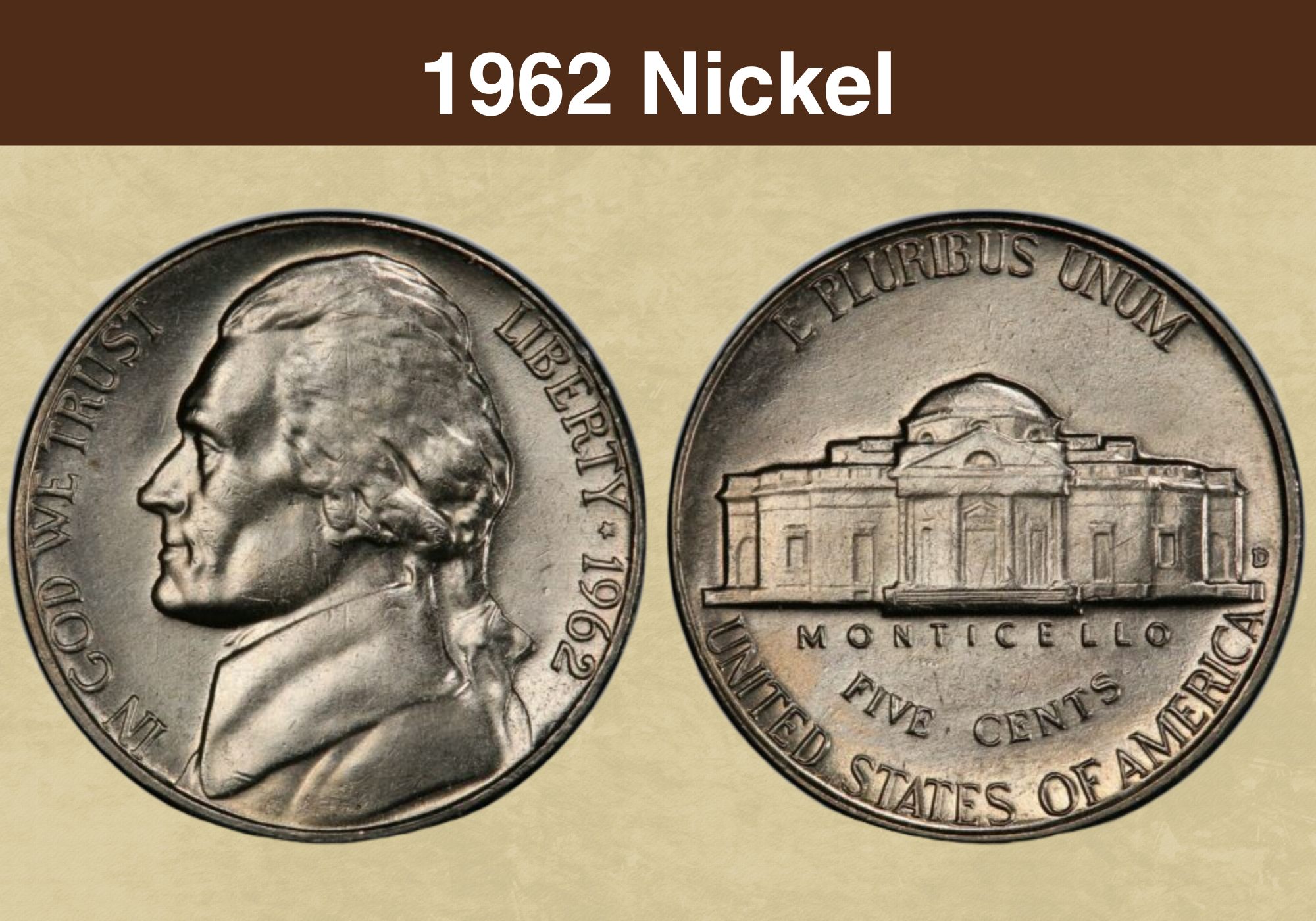
Coin Value Contents Table
Have you found a 1962 nickel in your pocket change and are wondering what it’s worth? Or perhaps you want to add one to your coin collection and are interested in what it will cost?
Either way, you’ve come to the right place!
We’re going to explore everything you need to know about the 1962 nickel value. From the impact of coin condition, to the interesting Mint errors that can add a premium to value, we’ve got you covered.
So if you’re ready to find out more, step this way!
1962 Nickel Value Chart |
||||
| Mint Mark and Color | XF45 | MS60 | MS65 | MS67 |
| 1962 (P) No Mint Mark Nickel Value | $0 | $2
Full step: $7 |
$15
Full step: $55 |
$375
Full step: $3,750 |
| 1962 D Nickel Value | $0 | $2
Full step: $20 |
$40
Full step: $4,250 |
$5,000 |
| PR60 | PR65 | PR67 | PR69 | |
| 1962 (P) No Mint Mark Proof Nickel Value | $4
Cameo: $7 |
$8
Cameo: $14 Deep cameo: $27 |
$12
Cameo: $24 Deep cameo: $50 |
$70
Cameo: $250 Deep cameo: $800 |
History of the 1962 Nickel
The nickel struck in 1962 has the same design on both sides as the nickels minted from 1938. The series is nicknamed Jefferson nickels after Thomas Jefferson, whose portrait appears on the obverse.
It replaced the design known as the “Buffalo nickel”, which the Mint had faced ongoing problems with striking successfully. Its run came to an end after just 25 years. That was the earliest the Mint could commission a new design without seeking the approval of Congress.
The new design for the nickel was the work of Felix Schlag. Schlag was German-born, and had served in the German army in the First World War. He emigrated to the USA in 1929. His design was selected following a competition run by the Mint.
The earliest Jefferson nickels are unsigned. But in 1966, the US Mint offered Schlag the opportunity to have his initials added to the obverse. They appear at the base of his portrait of Jefferson for coins struck from then until 2005. At that point, the portrait was replaced with a new image.
In the early years of the series, Jefferson nickels were produced by the Mint facilities in Philadelphia, San Francisco and Denver. But from 1954 to 1963, the San Francisco mint ceased production – so there are no 1962 nickels with the “S” mint mark.
There are, however, proof coins of that mintage. These were struck in Philadelphia every year from 1950 to 1964.
Jefferson nickels are still being struck to this day. The modern versions have a new portrait of the former President by the artist Jamie Franki.
Also read: Top 10 Most Valuable Nickels Worth Money
Features of the 1962 Nickel
The Obverse of the 1962 Nickel
The obverse is the “heads” side of the coin. And in the case of the 1962 nickel, the head in question belongs to the Founding Father and former US President, Thomas Jefferson.
The portrait, by German sculptor Felix Schlag, shows Jefferson in profile. He faces to the left as the coin is viewed, and he wears an enigmatic smile.
Schlag’s image bears a close resemblance to the sculpture of Jefferson by the renowned French artist, Jean-Antoine Houdon. Houdon’s original bust can be viewed today at the Boston Museum of Fine Arts.
The motto “IN GOD WE TRUST” appears to the left of Jefferson’s portrait, curving along the coin edge. On the other side, it’s mirrored by the word “LIBERTY”, followed by a star and the date.
The Reverse of the 1962 Nickel
The reverse design was also the work of Schlag. But it was considerably different from the version he’d originally submitted to the competition.
That had shown the house on Jefferson’s Virginia estate, Monticello. But unlike the frontal image eventually used in the coins, the first draft depicted it three-quarters on, with a tree in the foreground.
The change was the result of intervention by Mint officials. They complained that the tree was a palm (it wasn’t) and that this could not have been grown in Virginia. And they felt that the angle of the image was not “fitting”. They also required the text to be changed to a different font.
These days, the general consensus is that the amended design was less successful than Schlag’s original. Monticello had become rather generic, and it was considered necessary to add the building’s name to the coin to aid identification.
The words “E PLURIBUS UNUM” arch over the picture, running parallel to the upper coin edge. They are Latin and mean “From the many, one”, a reference to the country’s birth as a union of states.
Below Monticello is the denomination, and below that the country name. Both curve parallel to the lower edge of the coin.
The reverse is also where the mint mark – if there is one – appears. A nickel struck in Denver will have a “D” to the right of the image of Monticello. If there’s no letter, the coin was struck in Philadelphia.
Other Features of the 1962 Nickel
Although referred to as nickels, Jefferson nickels are made mostly of copper. The copper core is coated in nickel to give the silver hue.
The coins measure 21.2 millimeters across and weigh 5 grams. And they have a plain edge.
There are two different categories of business strike 1962 nickels: standard coins and those that are designated “Full step”. The latter refers to the quality of the strike. If it’s good enough, all five steps in front of Monticello will be clearly delineated.
A coin with the full step designation (often shortened to FS in coin descriptions) will be more valuable than one without it at the same grade.
There are lots of different examples of graded Jefferson nickels in this Youtube video from CoinHELPu.
Also read: Top 17 Most Valuable Buffalo Nickel Worth Money
1962 Nickel Grading
| # | Grade |
|---|---|
| 1 | Basal State-1 |
| 2 | Fair |
| 3 | Very Fair |
| 4, 5, 6 | Good |
| 7, 8, 10 | Very Good |
| 12, 15 | Fine |
| 20, 30 | Very Fine |
| 40 | Extremely Fine |
| 50 | About Uncirculated |
| 60 | Mint State |
| 65 | Mint State |
| 70 | Mint State |
Please check our grading guides to know your coin scale, It’s the necessary step to know the exact value of your coin.
Check out now: How to Grade Jefferson Nickel?
1962 Nickel Value Guides
1962 No Mint Mark Nickel Value
The Philadelphia Mint facility struck over 97 million Jefferson nickels in 1962. And while many have been lost over the years, they’re still easy to find. The independent coin graders, the PCGS, estimate that around 78 million survive.
If your coin is in circulated condition, then, it’s very unlikely to be worth more than its face value. The exception would be if it exhibits a Mint error.
Even uncirculated coins can be inexpensive. The coin grading scale runs from 1 to 70, with uncirculated coins – known as “mint state” – graded from 60 upwards.
A standard mint state 1962 Philadelphia nickel graded MS60 will be worth around a couple of dollars. If the strike is good enough for it to be a full step coin, that rises to around $7.
Coins graded MS65 and above are classed as “gems”. And even these are in relatively plentiful supply. A 1962 Philadelphia nickel graded MS65 will be worth around $55 with the full step designation, and just $15 without it.
Amongst the finest examples to have come to light to date are coins graded MS67. A standard coin at that level is valued by the PCGS at $3,750, while a full step example is worth ten times that.
And a single 1932 no mint mark nickel has been graded MS67+ with the full step designation. That coin sold at auction in 2013 for $21,150. But when it changed hands again in 2021, the price dropped to $9,600.
1962 D Nickel Value
The Denver Mint facility was the most prolific in its production of 1962 nickels. Over 280 million nickels with the “D” mint mark were struck that year.
The PCGS estimates that around 225 million survive today in all grades. Of those, a healthy 155,000 standard nickels are in mint state, with an additional 30,000 full step examples.
Like their Philadelphia counterparts, circulated coins won’t be worth more than their face value unless they have an interesting Mint error.
Values are higher for uncirculated coins. But ready availability at most grades means they can still be acquired for a modest outlay.
At the lower end of the scale, a 1962-D nickel graded MS60 is worth around $20, rising to $40 at MS65. The premium for a full step example is higher than with Philadelphia nickels. At MS60, a 1962 full step Denver nickel is worth $20, and it’s $4,250 at MS65.
That hefty PCGS valuation reflects the fact that MS65 is the highest grade yet awarded to a 1962 full step Denver nickel by that agency. Rival coin graders the NGC have, however, certified full step coins at MS66.
Amongst standard examples, grades go up to MS67. The PCGS has certified only one coin at that level, and values it at $5,000.
1962 Proof Nickel Value
Proofs are coins struck on specially selected and polished planchets using highly detailed dies. In the nineteenth century, they were produced primarily for coin archives. But as coin collecting began to take off as a hobby, the Mint struck more and more proofs for collectors.
In 1962, over 3.2 million proof nickels were produced at the Philadelphia Mint facility. Around half of those are believed to survive today, with about 120,000 in gem condition.
That level of availability means it’s possible to acquire a high quality coin without paying a fortune. A proof graded PR60 can be yours for around £4. And even a near-perfect PR69 example is only worth around $70.
But there are more expensive examples. Some proofs are graded “cameo” or “deep cameo”. These are coins with a pleasing contrast between highly reflective fields and frosted devices. In the case of deep cameos, the contrast is particularly strong.
A cameo graded PR60 is worth around $7, rising to $250 at PR69. And for deep cameos, the range is from $12 at PR64 to $800 at PR69.
Also read: Top 17 Most Valuable Jefferson Nickels Worth Money
Rare 1962 Nickel Errors List
1962 D Nickel Over-Struck on a 1962 D Cent
Very rarely, coins are struck on something other than the correct planchet. And that was the case for one 1962 nickel produced in Denver, which was somehow struck onto a 1-cent piece from the same year and Mint facility.
On the reverse, to the upper left of the image of Monticello, you could see the word “LIBERTY” from the cent’s design.
The coin was graded MS64 RB by the NGC. The RB here stands for “red and brown”, the color grading for a bronze coin. And when it was offered for sale at auction, it made over $900.
1962 D Nickel, Obverse Planchet Lamination
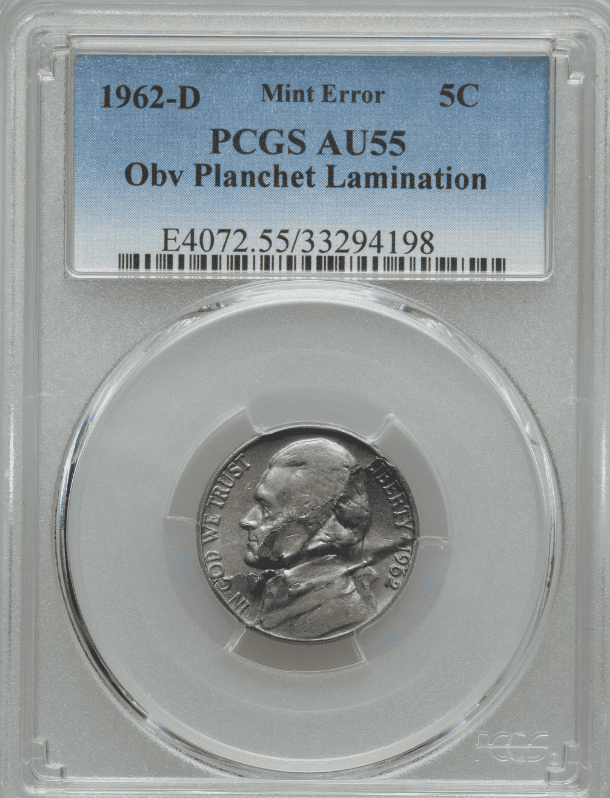
Lamination errors occur because of a defect in the composition of the planchet on which the coin is struck. Sections of the surface appear to have peeled away, giving the coin a very distinctive appearance.
One of the Denver 1962 nickels exhibited this error. It was graded AU55 by the PCGS (the letters stand for “about uncirculated”).
A standard 1962-D nickel at that grade would have been worth little, if anything, more than its face value. But with the error, it sold at auction for $45.
This YouTube video from Couch Coin Clips contains a number of different examples of errors amongst 1962 nickels. And it also includes images and prices for some of the most expensive non-error coins.
Also read: 14 Most Valuable Nickel Errors Worth Money
Where to Sell Your 1962 Nickel ?
Now that you know the value of your coins, do you know where to sell those coins online easily? Don’t worry, I’ve compiled a list of these sites, including their introduction, pros, and cons.
Check out now: Best Places To Sell Coins Online (Pros & Cons)
FAQs
Is my 1962 nickel worth anything?
The vast majority of nickels from 1962 will be worth only their face value. But if your coin is in top condition, or it has an interesting Mint error, it could be worth much more.
To get a definitive opinion on condition, you’ll need to get your coin independently assessed. This costs money, so it’s only worth doing if you think there’s a good chance your coin is really valuable.
A good starting point is to look at the steps in front of Monticello on the reverse of the coin. If all five steps are distinct and clearly demarcated, your coin is a “full step” example. That means it could be worth anything from $7, right up to thousands.
What makes a 1962 nickel rare?
Coins in the very finest condition are rare, as are those with Mint errors. But it can be difficult to tell the difference between some kinds of Mint errors – like defective planchets or lamination errors – and later damage.
The easiest type of error to spot is a coin that’s been struck on something other than its correct planchet. If the planchet was designed for a smaller coin, the design will disappear over the edges. And if it was struck on a different coin, you’ll be able to see traces of the original design.
Amongst the 1962 nickel errors found to date are coins struck on a 1-cent piece, on a dime, and even on an Ethiopian 5-cent coin!

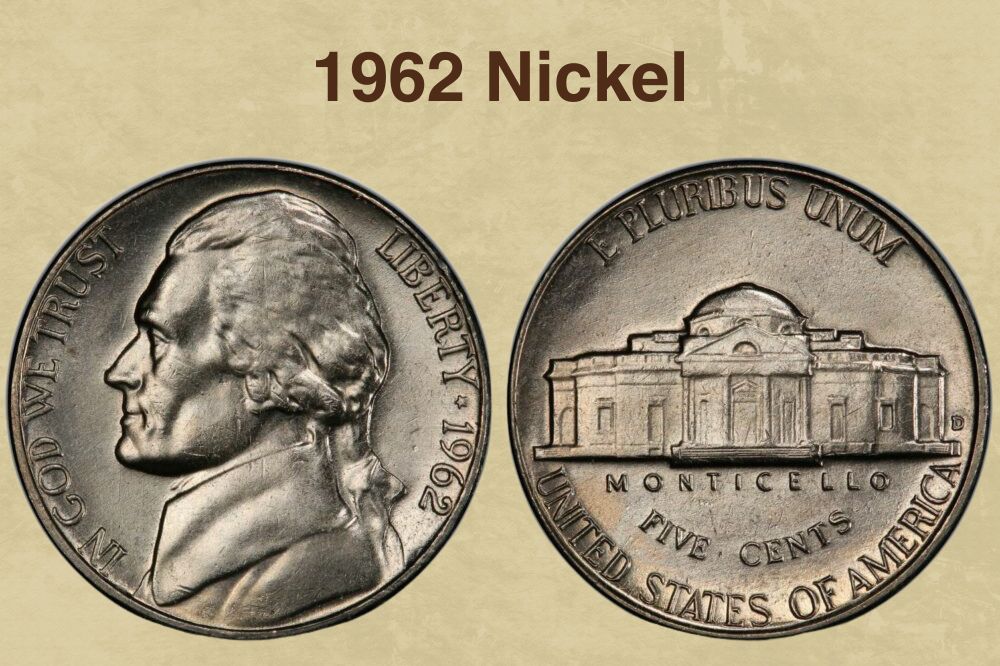
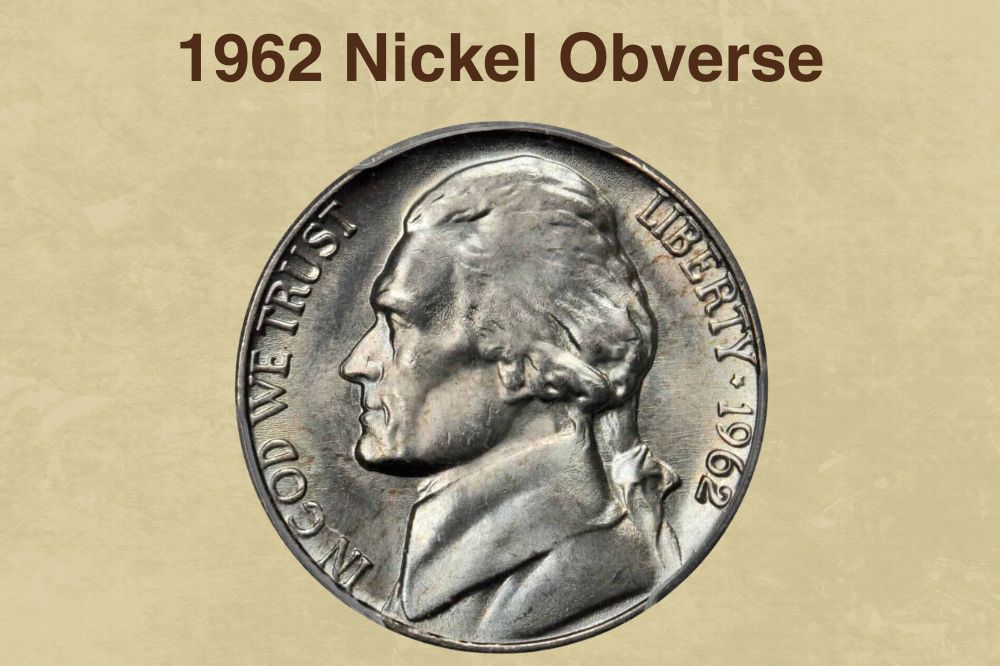
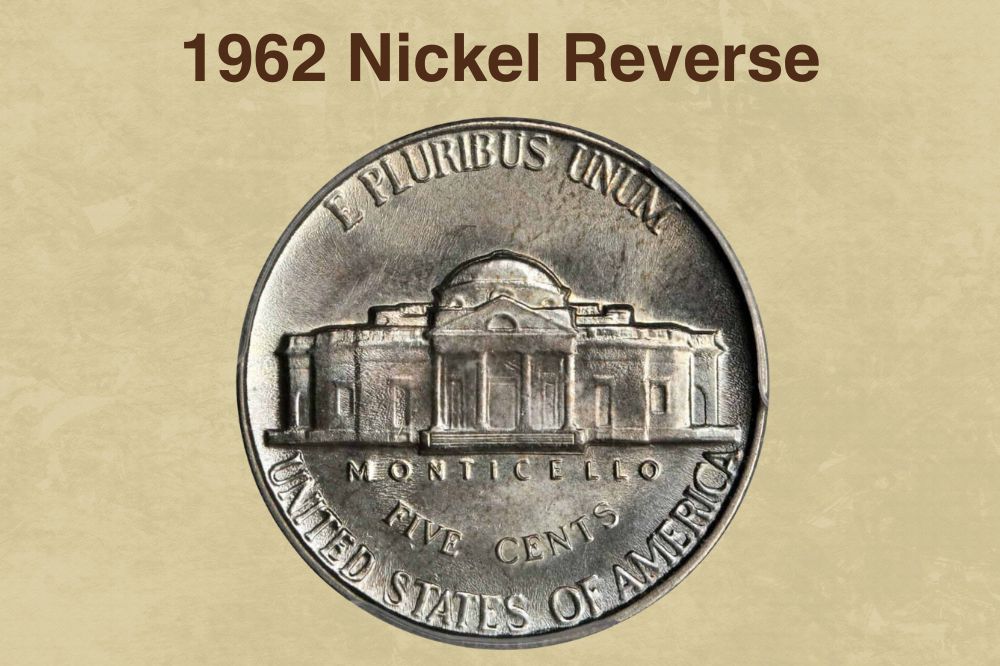
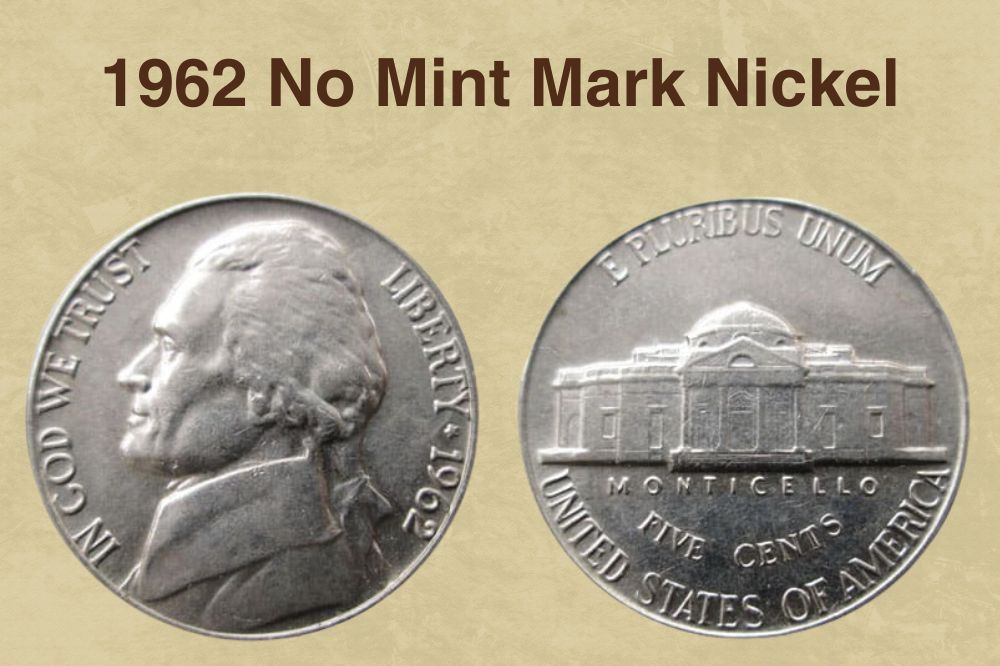
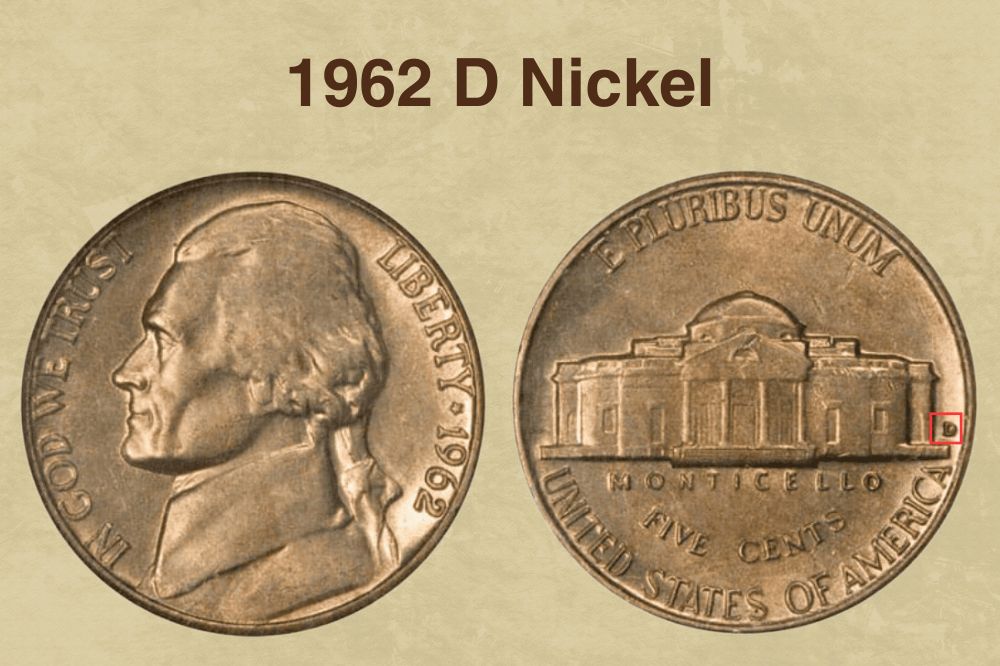
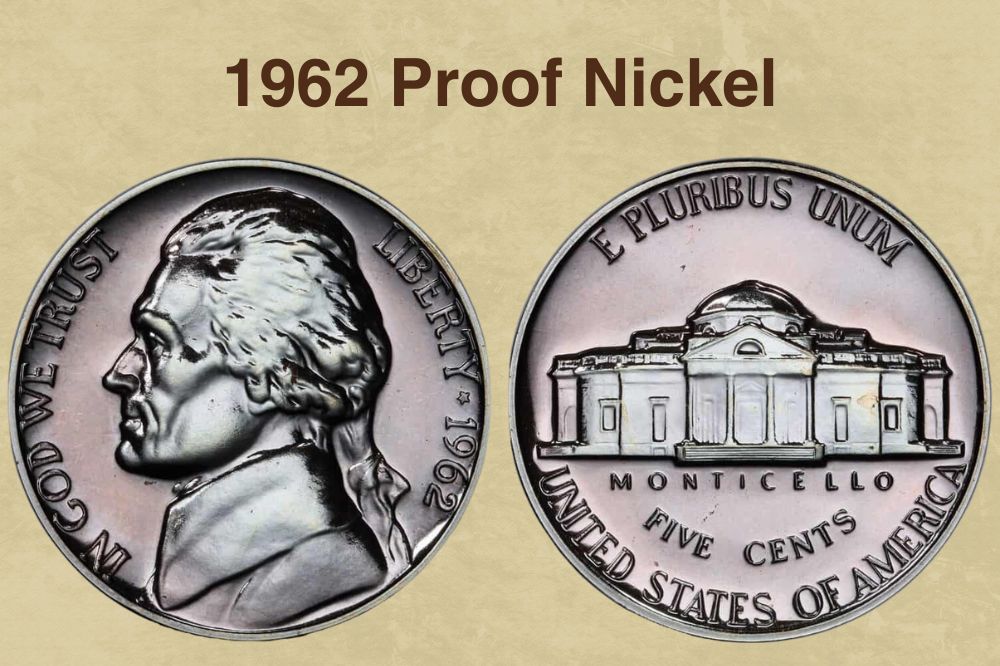
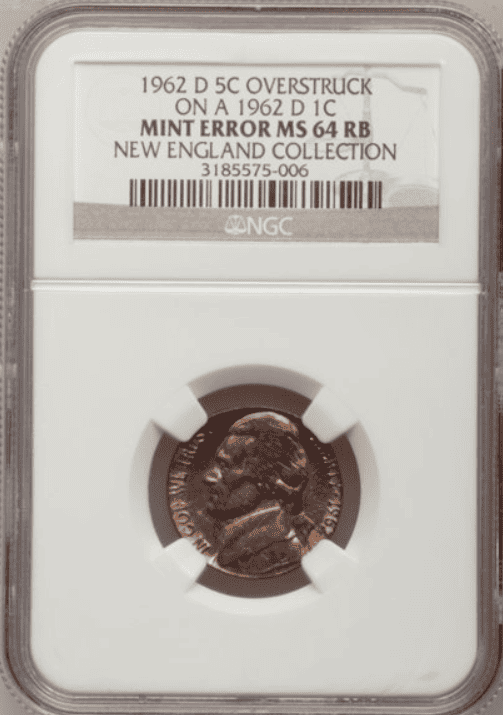
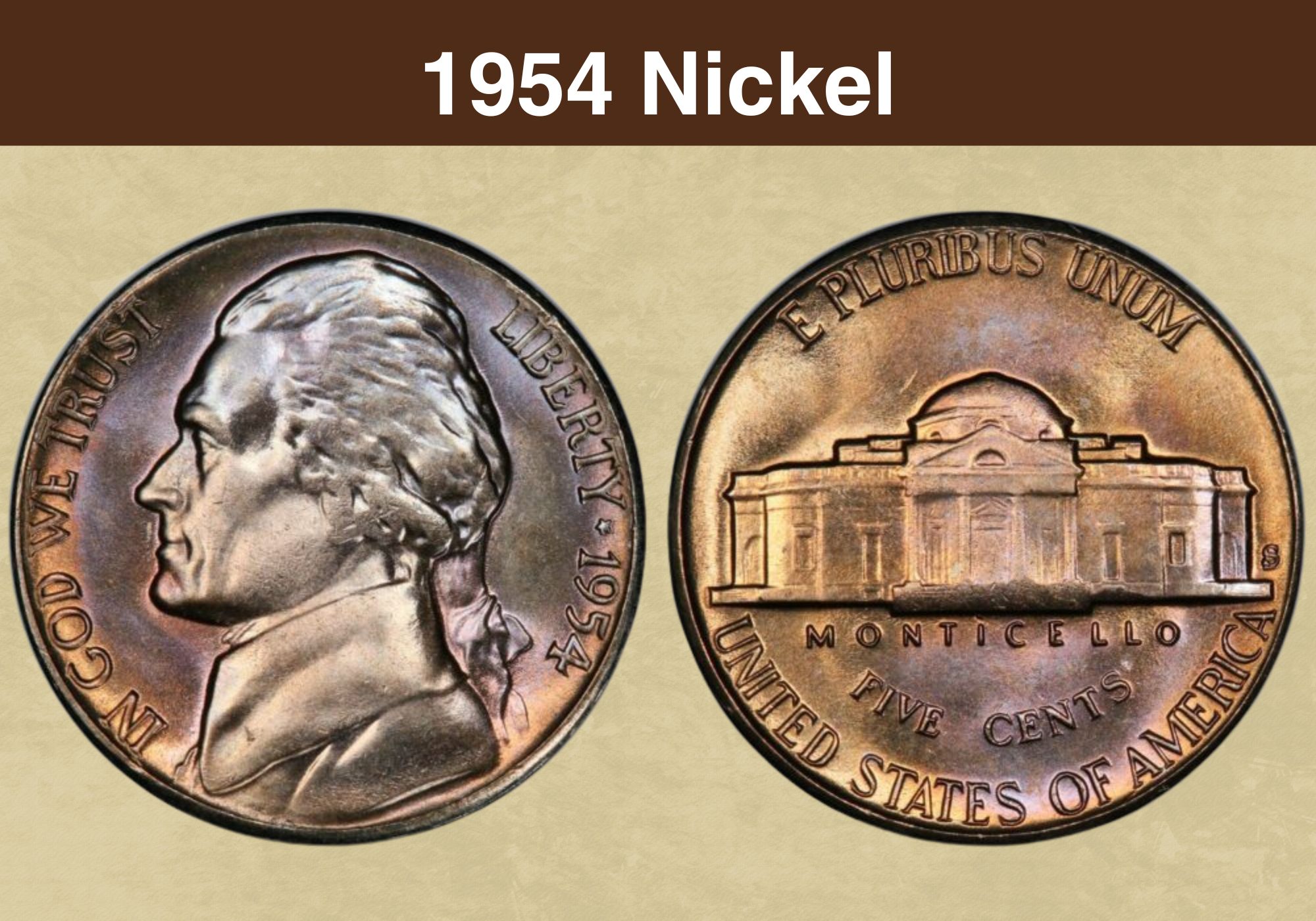
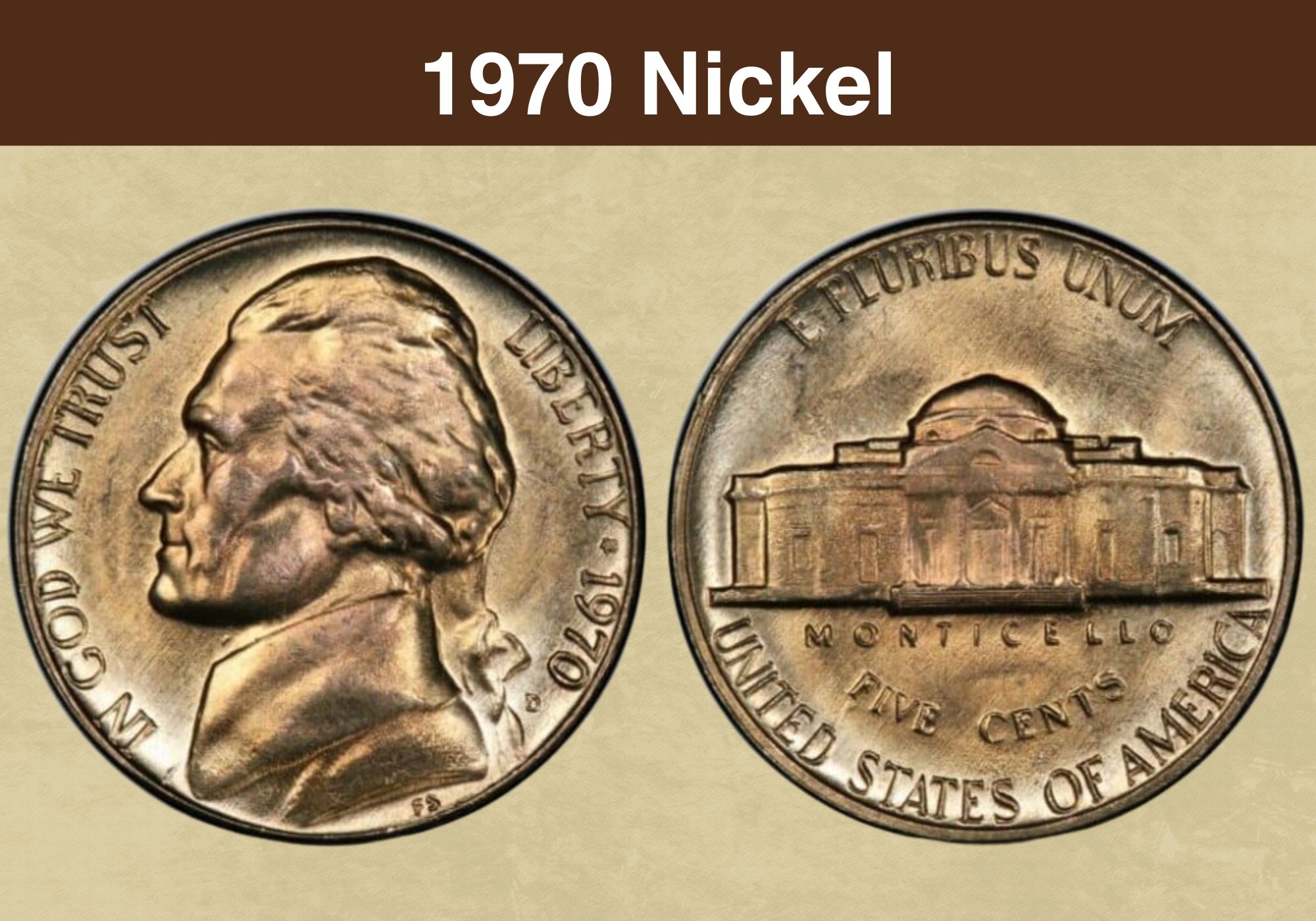
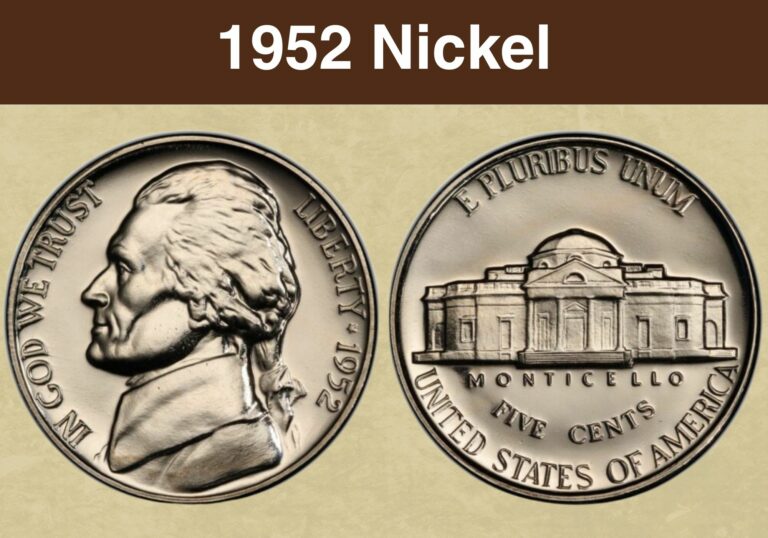
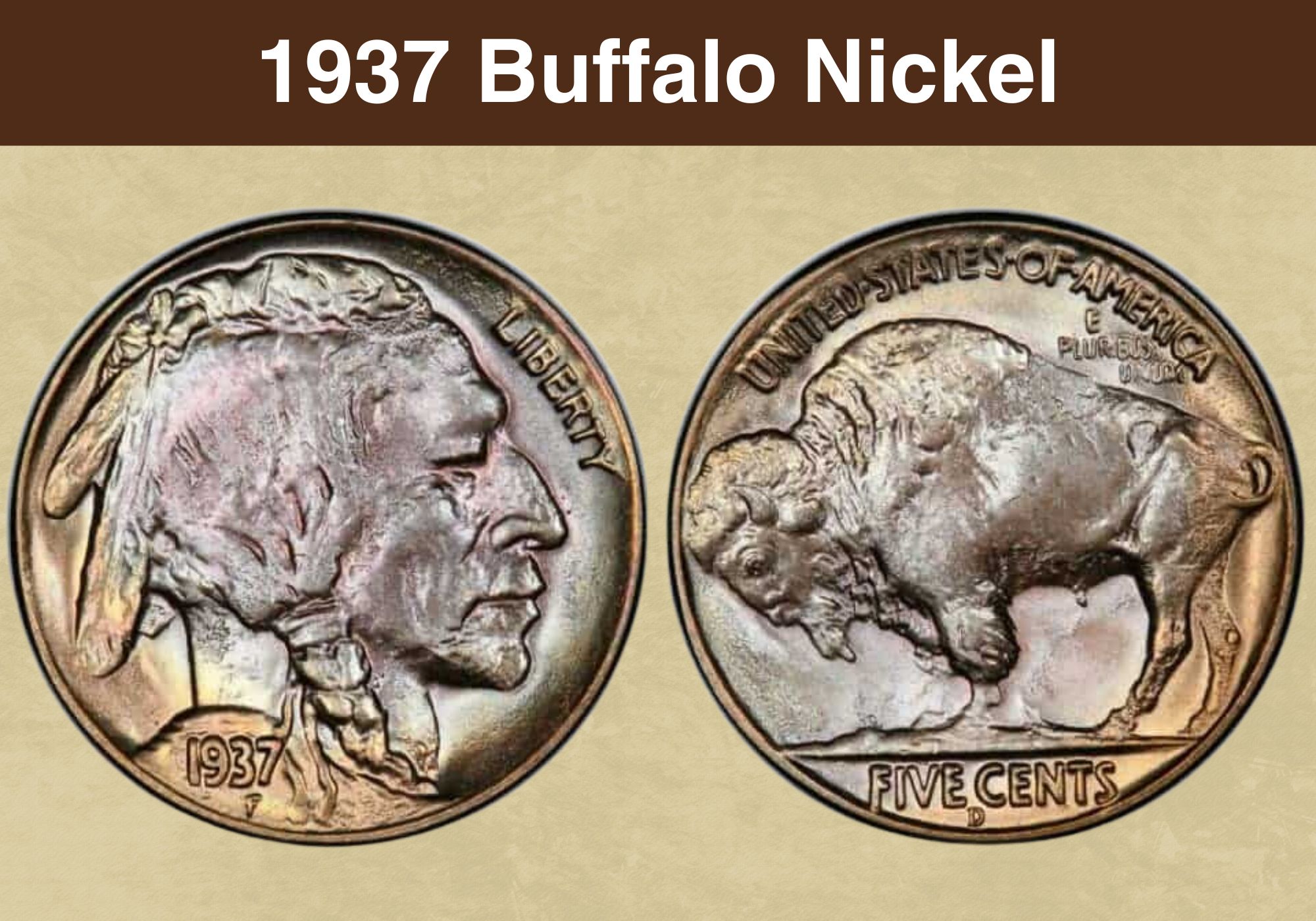
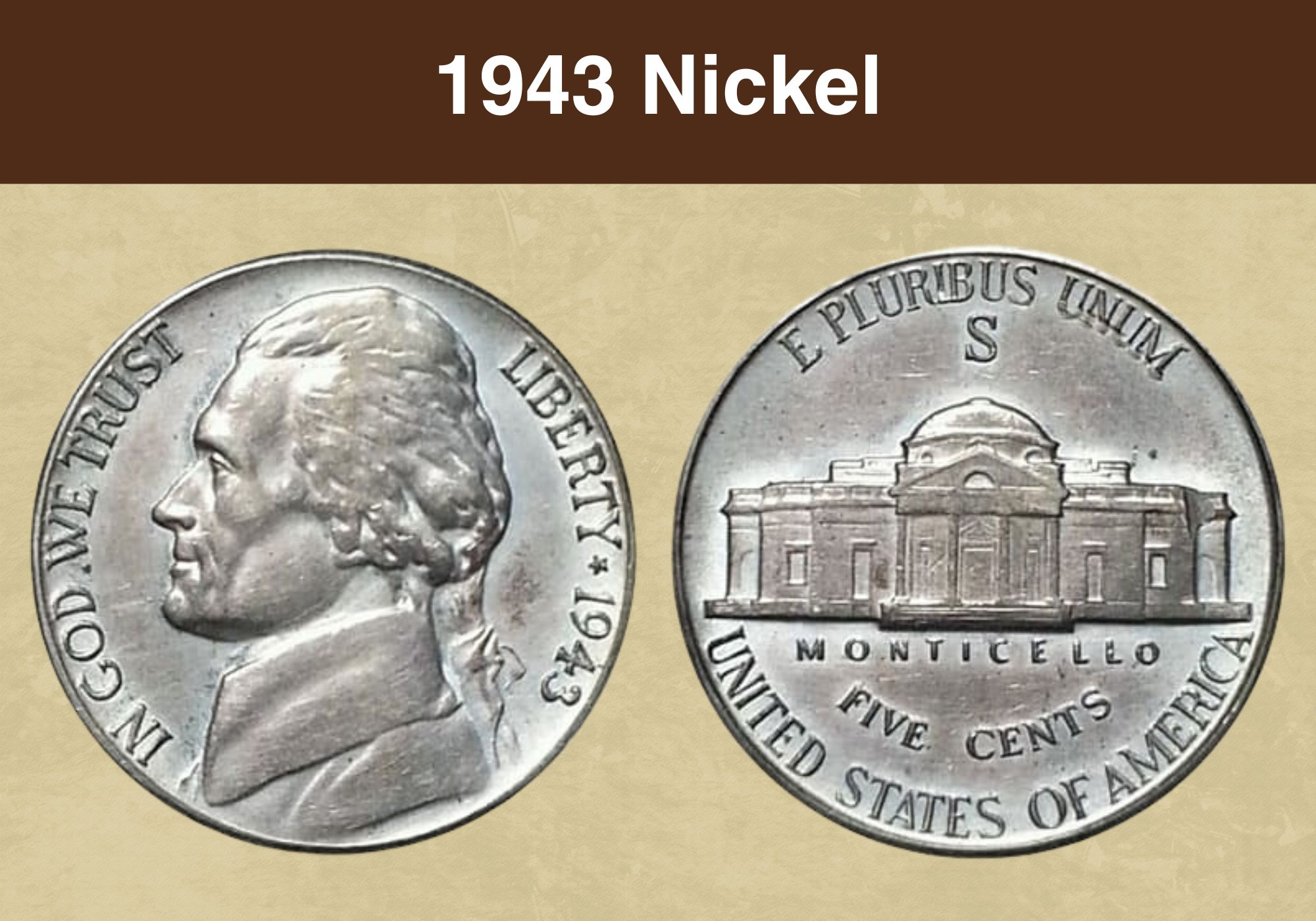
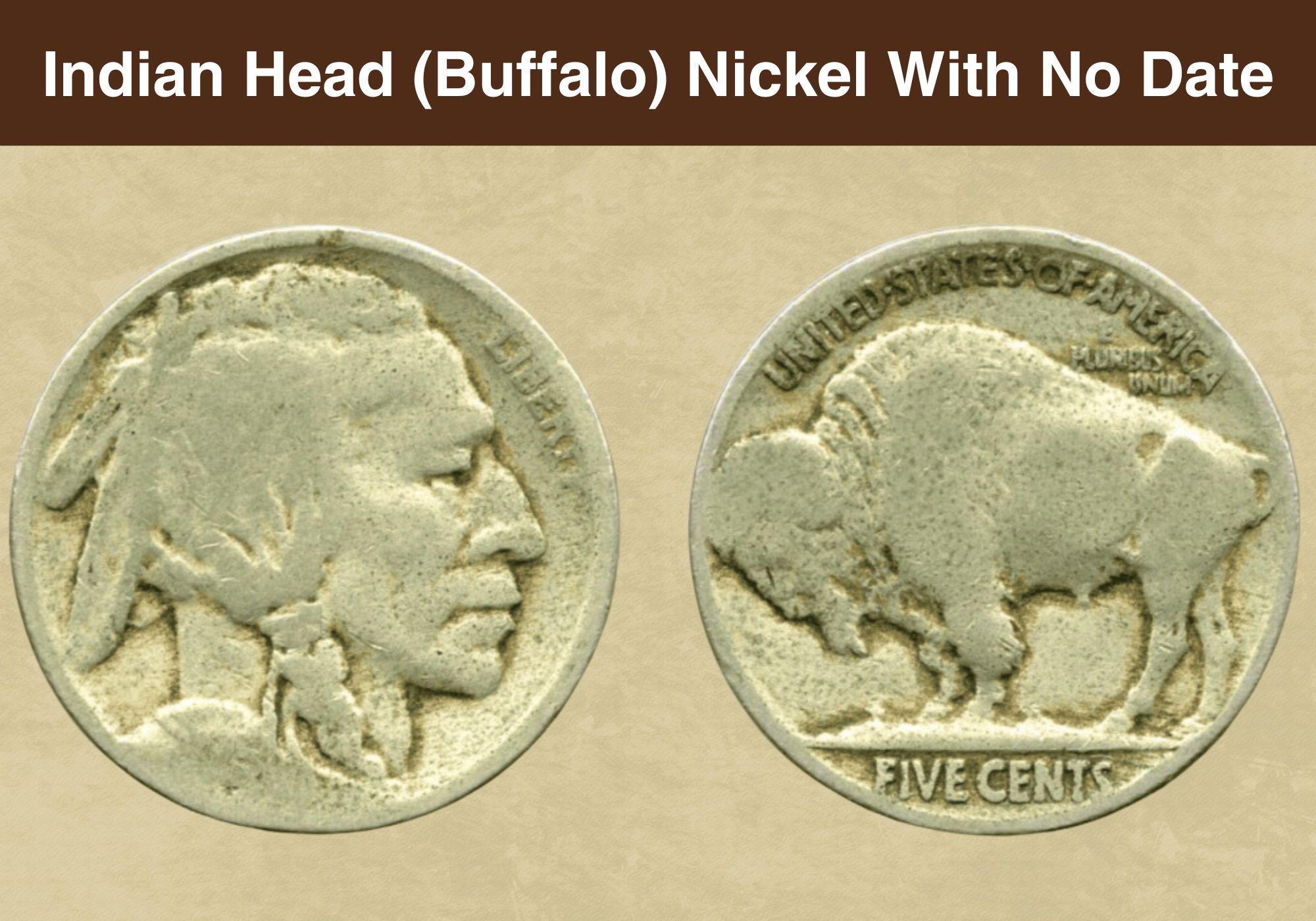
I have a 1962D Nickel with a2 punched over 1 on the date and was wondering if you could help me out with the value of the coin?